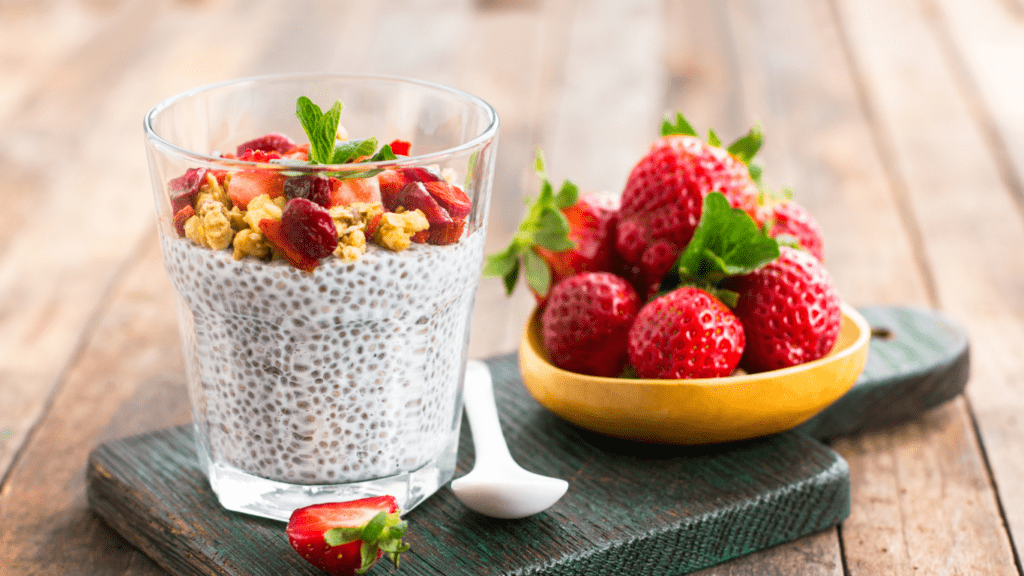Embarking on an anti-inflammatory diet journey can be a transformative step towards enhancing overall well-being and vitality. When it comes to meal planning, thoughtful consideration of ingredients and their impact on inflammation levels is key.
As someone who has explored the realm of anti-inflammatory eating, I’ve discovered the power of strategic meal planning in fostering a healthier lifestyle. In this article, I’ll share practical tips and insights on how to curate a menu that not only tantalizes your taste buds but also supports your body in fighting inflammation.
From incorporating vibrant fruits and vegetables to choosing the right fats and proteins, I’ll guide you through the essentials of crafting anti-inflammatory meals that are both delicious and nutritious. Let’s delve into the art of meal planning for an anti-inflammatory diet and unlock the potential for a vibrant, healthful life.
Understanding Anti-Inflammatory Diet
To comprehend the principles of an anti-inflammatory diet, it’s crucial to focus on consuming foods that help reduce inflammation in the body. This type of diet emphasizes whole, nutrient-dense foods that have been shown to lower the levels of inflammation markers in the body, promoting better overall health.
By prioritizing foods that are rich in antioxidants, healthy fats, and fiber, individuals can support their body’s natural ability to fight inflammation. An anti-inflammatory diet typically includes plenty of fruits and vegetables, whole grains, lean proteins, and healthy fats such as those found in olive oil, nuts, and seeds.
These foods provide essential nutrients that can help reduce inflammation and support various bodily functions. By avoiding processed foods, sugary beverages, and excessive amounts of red meat, individuals can reduce the intake of pro-inflammatory substances that may contribute to inflammation in the body.
Incorporating an anti-inflammatory approach to meal planning involves making mindful choices about the foods you consume on a daily basis. By focusing on whole foods and minimizing the consumption of processed and refined products, you can support your body’s natural anti-inflammatory processes and promote better overall health and well-being.
Striving to create balanced meals that include a variety of fruits, vegetables, whole grains, and lean proteins can help you achieve your nutritional goals while reducing inflammation in the body.
Benefits of Anti-Inflammatory Diet
Understanding the advantages of following an anti-inflammatory diet is crucial for optimizing overall health and well-being. By focusing on consuming foods that help reduce inflammation in the body, individuals can experience a wide range of benefits that positively impact their quality of life.
- Reduced Inflammation: Incorporating anti-inflammatory foods into your diet can help lower inflammation levels in the body, potentially reducing the risk of chronic diseases linked to inflammation.
- Improved Digestive Health: By choosing whole, nutrient-dense foods, you can support a healthy gut microbiome, which plays a vital role in digestion and overall well-being.
- Enhanced Immune Function: Anti-inflammatory foods are often packed with essential nutrients and antioxidants that can strengthen the immune system, helping the body ward off infections and illnesses.
- Better Heart Health: Following an anti-inflammatory diet may contribute to reducing the risk of heart disease by promoting healthy cholesterol levels and supporting overall cardiovascular health.
- Weight Management: This diet can aid in weight management by emphasizing nutritious, whole foods and reducing the consumption of processed items, potentially supporting sustainable weight loss or maintenance.
- Increased Energy Levels: Consuming foods that reduce inflammation and provide essential nutrients can help boost energy levels and combat fatigue, leading to improved vitality throughout the day.
- Balanced Blood Sugar: The emphasis on nutrient-dense foods in an anti-inflammatory diet may help stabilize blood sugar levels, which is beneficial for overall health and reducing the risk of type 2 diabetes.
- Joint Health: Some anti-inflammatory foods contain compounds that may help reduce joint pain and inflammation, making this diet beneficial for individuals with inflammatory conditions like arthritis.
- Enhanced Mental Clarity: A diet rich in anti-inflammatory foods has been associated with improved cognitive function and mental clarity, potentially supporting brain health and reducing the risk of cognitive decline.
By incorporating these meal planning tips and focusing on anti-inflammatory foods, individuals can harness the numerous benefits of this diet to promote long-term health and well-being. Making mindful food choices can have a significant impact on overall health, helping individuals proactively support their bodies’ natural processes and defenses against inflammation.
Meal Planning Strategies
When it comes to meal planning for an anti-inflammatory diet, I’ve found that prioritizing whole foods and incorporating anti-inflammatory ingredients can make a significant impact on overall health and well-being.
Let’s delve into some practical strategies to help you design meals that support your body’s fight against inflammation.
Prioritizing Whole Foods
In my experience, focusing on whole foods is key to creating a balanced and anti-inflammatory meal plan. These nutrient-dense foods are rich in vitamins, minerals, and antioxidants that can help reduce inflammation in the body.
By including a variety of colorful fruits and vegetables, whole grains, and lean proteins in your meals, you can ensure that you’re providing your body with the essential nutrients it needs to thrive.
Incorporating Anti-Inflammatory Ingredients
When planning your meals, it’s important to include ingredients known for their anti-inflammatory properties. Some excellent choices include fatty fish like salmon and mackerel, which are high in omega-3 fatty acids, as well as nuts, seeds, and olive oil, which are sources of healthy fats.
Additionally, turmeric, ginger, garlic, and green tea are known for their anti-inflammatory effects and can be easily incorporated into various dishes to boost their nutritional value. By incorporating these ingredients into your meal planning, you can create flavorful and nourishing meals that support your body’s efforts to combat inflammation.
Cooking Techniques for Inflammation Reduction
Exploring various cooking techniques can help enhance the anti-inflammatory benefits of your meals. When preparing food, I recommend opting for methods that preserve nutrients and minimize the addition of unhealthy fats and oils.
Some effective cooking techniques for reducing inflammation include:
- Steaming: Steaming is a gentle cooking method that helps retain the nutrients present in foods like vegetables, fish, and legumes. It’s a great way to cook without adding extra fats while keeping the flavors intact.
- Grilling or Broiling: Grilling or broiling your food can provide a delicious smoky flavor without the need for added fats. When grilling, consider marinating your proteins with anti-inflammatory ingredients like olive oil, garlic, and herbs.
- Stir-Frying: Stir-frying quickly cooks vegetables and lean proteins in a small amount of oil, making it a flavorful and healthy cooking technique. Opt for heart-healthy oils like olive or avocado oil for their anti-inflammatory properties.
- Baking or Roasting: Baking or roasting vegetables, whole grains, and lean proteins can enhance their natural flavors without sacrificing nutrients. These methods require minimal added fats and can be flavored with anti-inflammatory spices like turmeric and cinnamon.
- Raw Preparation: Consuming certain foods raw, such as colorful fruits and vegetables in salads or smoothies, can provide a concentrated source of anti-inflammatory compounds and enzymes. Raw preparations help maintain the nutritional integrity of these foods.
Incorporating these cooking techniques into your meal preparation can elevate the anti-inflammatory potential of your diet. Experimenting with different methods can not only enhance the flavors of your meals but also contribute to your overall well-being by supporting inflammation reduction.


